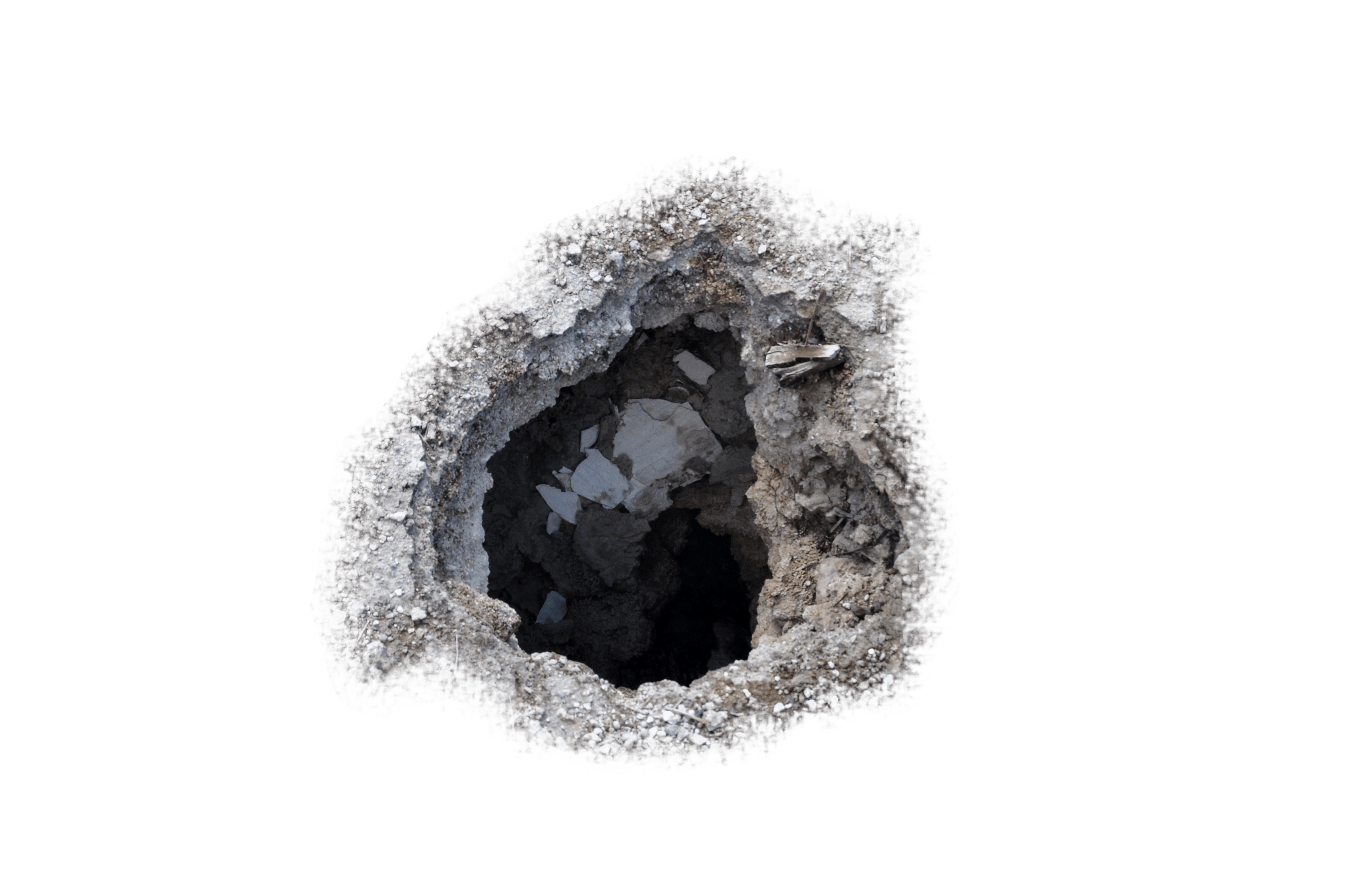Continuing from the previous blog post on VFX and its uses, this article will discuss how I used VFX to track a sink hole onto the side of the road, with fire and impacts surrounding.
The Process: –
We were given assets by Jon Holmes, one included was a sink hole with an alpha channel, helping to feather the edges of the sink hole into the road, giving it a smooth finish. This was important otherwise the edges would be too sharp; by feathering it help convince the viewer that the sink-hole is indeed there and tracked onto the surface of the road.
We used the same process as in the last blog post to track the sinkhole onto the road, however there was a slight twist. With the grid that was tracked onto the cardboard box it was all flat and there was no depth within in the graphic or box – so it was necassary to leave it flat. However due to a sink hole having depth due to it going into the ground we need to cut out the middle of the image which should appear lower down than surface; once put into 3D space its easy to scale up, shift down and backwards in space along the Z axis to help achieve a parallax effect.
The laws of parallax tell us that objects further away from us move slower than objects closer to us – this graphic is a clear example of this. The insides of the hole need to move slower than the surface of the hole. Once cut out and tracked, smoke and fire is added to help create that immersion within that univerise. Because what sinkhole is not complete without fire and smoke?!
Level 2 ::: Workshop 2 ::: Simple Matchmove in AE from The Curious Engine on Vimeo.
Tracking Surfaces in 3D Space with a Moving Camera
The next task was to track 4 points on top of the cardboard box, allowing us to create text and place objects within 3D space while we move the camera around, previously the box moved and the camera was fixed. By tracking the edges of the box using match move it allows the camera to move around to the point where certain track points are off camera – helping create the illusion of objects moving off camera and then reappearing in the same place; helping convince viewers that the objects really are there.
In the following video you can see this clearly; take notice of the magazine in the left lower hand corner side, this surface has also been tracked allowing us to change that graphic should we wish to.
Matchmove ::: AE ::: VFX ::: Basics ::: Example Render from The Curious Engine on Vimeo.
Applications in Convergence Task: –
I feel that VFX will be heavily used within my one minute wonder due to it being relevant to what I am interested in, while also being a way to execute these ideas within a film medium. A few ideas I have include tracking my name onto a surface such as a desk or the side of a building or road. I would also use the tracking tools to replace billboards for instance with graphics that I’ve created that could represent thoughts in my head. This for instance could change when I walk past the billboard or if something was said in the narration.
